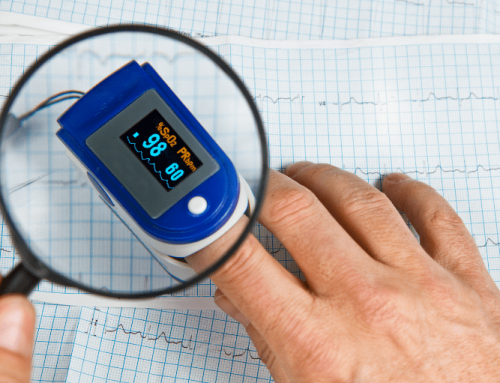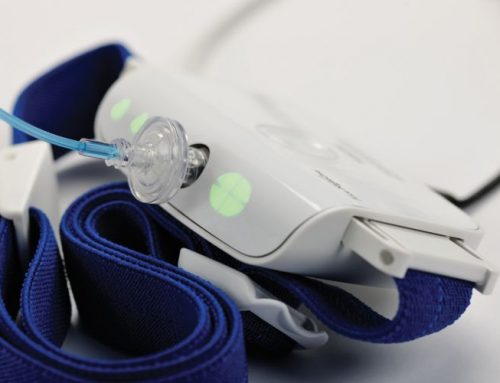How Pulse Oximetry Works
The body’s need for oxygen is undeniable, and the correct amount is essential for sustaining normal daily activities. If oxygen content falls, even slightly, it can lead to disruptive symptoms like shortness of breath and headaches. That’s why it is important to know the oxygen content of the blood. But it can be hard to predict the availability of oxygen at the tissue level. Blood gas measurements, through an arterial blood draw, is the most accurate way to measure blood gases, ventilation, and the pH of the blood. But this only provides an insight into the oxygenation at the time of the blood draw. Oxygen saturation can change quickly, so continuous monitoring of oxygen levels for specific conditions is necessary to ensure there are no undetected changes that can lead to life-threatening situations. Pulse oximetry is a great alternative to continuously monitor the oxygen saturation of the blood. Pulse oximeters are easy to use, non-invasive devices that can alert individuals immediately when levels begin to fall below normal.
Oxygen enters the body through inhalation by the lungs, where circulating red blood cells bind to it with a protein called hemoglobin. Hemoglobin binds the oxygen molecule and carries it through the arteries to the cells, tissues, and organs. Red blood cells carrying oxygen are referred to as oxygenated blood. The tissues then use the oxygen as fuel and release carbon dioxide. Carbon dioxide then reattaches to the hemoglobin in red blood cells and is carried back to the lungs to be exhaled. Red blood cells carrying carbon dioxide are referred to as deoxygenated blood. The purpose of pulse oximetry is to monitor how well the heart pumps oxygenated red blood cells throughout the body. The pulse oximeter gives a blood saturation reading by displaying the percentage of hemoglobin that has bound oxygen molecules. Normal readings in a healthy adult are 95 to 100 percent. Values lower than 95 percent are considered low, and anything lower than 90 percent is considered hypoxemia and requires medical intervention with supplemental oxygen.
What Is a Pulse Oximeter?
Pulse oximeters are clip-like devices that are worn on a finger, toe, or earlobe. The device emits red and infrared light, and a light-sensitive detector on the opposite side detects the amount of light that passes through the finger. The light that does not pass through the finger is absorbed by blood, tissue, or bone. The amount of light the bone, tissue, and deoxygenated blood absorb does not change; however, the oxygenated blood content is always changing due to the beating of the heart. Because oxygenated blood is the only variable that is changing, it can be measured by the sensor at different intervals. As mentioned earlier, the sensor emits two light sources, red and infrared light. The oxygenated blood absorbs the infrared light, while the deoxygenated blood absorbs the red light. The pulse oximeter calculates the oxygen saturation by determining the ratio of the amount of red light absorbed compared to the amount of infrared light absorbed. The amount of light received by the detector indicates the amount of oxygen bound to hemoglobin in the red blood cell. If more infrared light reaches the light detector, the oxygen saturation is low, but if only a small amount of light reaches the sensor, oxygen saturation is high. As the amount of oxygenated blood changes, the amount of light absorbed will change, and a new oxygen saturation reading, or SpO2 reading, will be generated. In addition to measuring oxygen saturation, pulse oximeters also detect heart rate.
Uses for Pulse Oximetry
Pulse oximetry can be used for several reasons.
- Assessing whether someone needs help breathing.
- Evaluating ventilator effectiveness.
- Monitoring newborn babies.
- Diagnosing shortness of breath.
- Monitoring oxygen levels during and after surgical procedures.
- Assessing an individual’s ability to tolerate physical activity.
- Assessing whether breathing stops while sleeping in cases of sleep apnea.
- Diagnosing and monitoring current health conditions to ensure treatment is effective or if adjustments are needed.
Conditions that can affect blood oxygen levels are chronic obstructive pulmonary disease (COPD), asthma, pneumonia, lung cancer, heart failure, heart attack, and congenital heart defects.
What Can Affect the Results of a Pulse Oximeter?
Because pulse oximetry helps treat patients with serious health conditions, the readings must be accurate. However, some variables can interfere with the device and produce inaccurate readings. Pulse oximeters have a margin of error of 2 percent, so if a more precise reading is necessary, a physician may recommend an arterial blood gas test over a pulse oximeter reading. The pulse oximeter must fit the finger correctly. A sensor that is too big or too small can give an inaccurate reading or won’t produce a reading at all. This is because the light source and light detector won’t line up correctly and it will not be able to detect oxygen content. Excess movement from patients who suffer from conditions that cause rapid movements like tremors, seizures, or shivering, can also give inaccurate readings due to a poor signal.
An occasion in which a pulse oximeter can give a false elevated reading is if the individual is suffering from carbon monoxide poisoning. When carbon monoxide poisoning occurs, the hemoglobin in red blood cells binds to the carbon monoxide over oxygen. Pulse oximeters will detect the carbon monoxide and give a reading as if it is oxygen. So, the pulse oximeter will give a normal reading when, in fact, there are low levels of oxygen available to the tissues. This can cause severe complications or even suffocation. Anemia is also a condition that will give falsely high readings. Anemia is a condition in which there is a lack of red blood cells circulating throughout the body, meaning there is a decreased amount of hemoglobin. So, the available hemoglobin may be saturated with oxygen, but there is actually not enough to withstand the tissues’ demand.
Consistent blood flow is also essential to have accurate readings on a pulse oximeter. Things like cold conditions, medications, compression, cardiac arrest, tight clothing, or pressure cuffs can decrease blood flow, causing low blood pressure and will cause readings to be low. Dyes, like methylene blue and fingernail polish, will also produce lower oxygen saturation readings because the dyes can either reflect or absorb light. And finally, excess light hitting the sensor can cause the device to malfunction due to external light interference.
Pulse oximetry is a quick, non-invasive, and straightforward way to measure the oxygenation of the blood and is a great way to monitor heart and lung function and disease progression. While it is not perfect, it is a great tool when it is necessary to know the oxygenation of the blood quickly and without discomfort.









